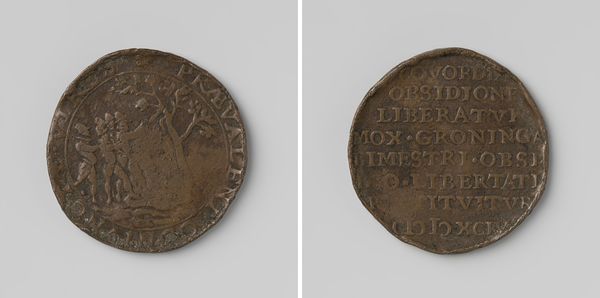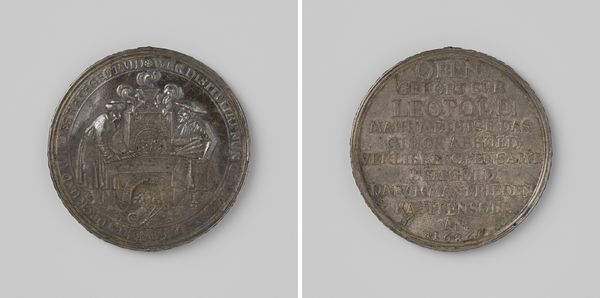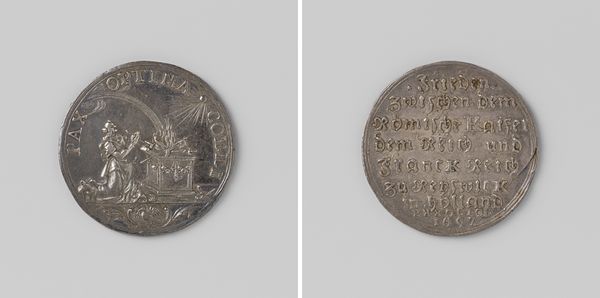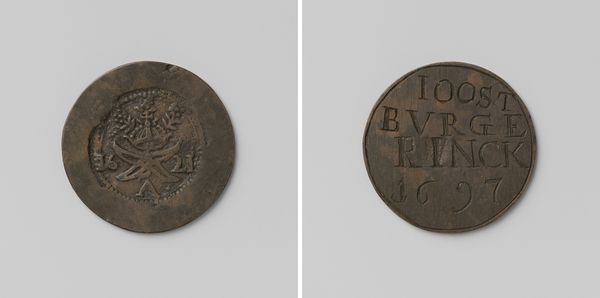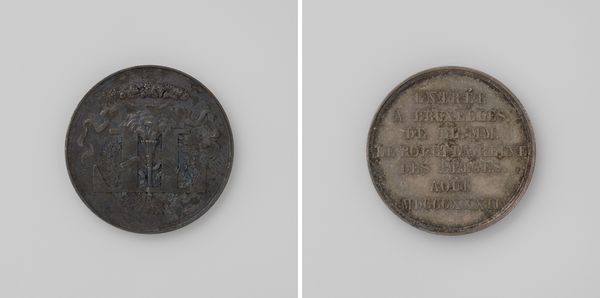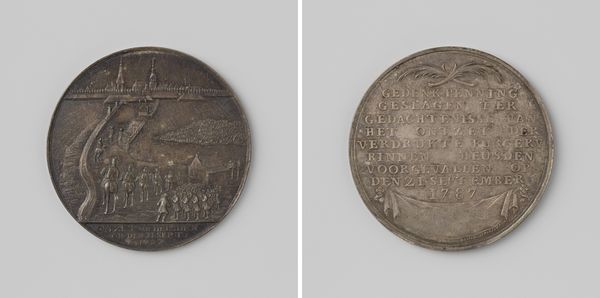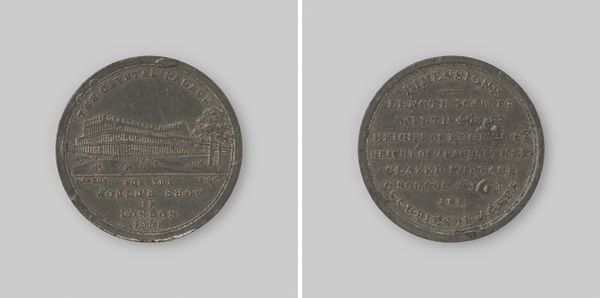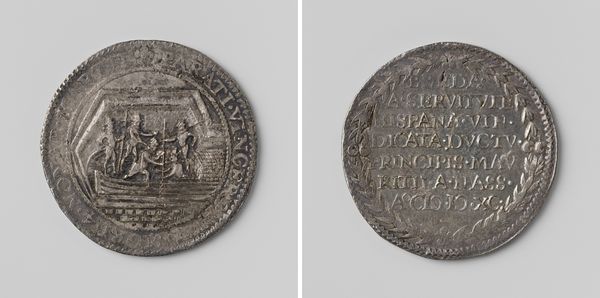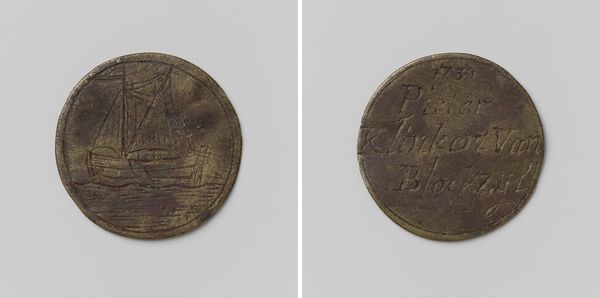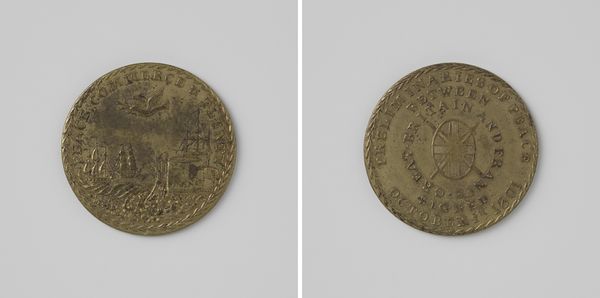
Koek-, beschuit- en pasteibakkersgilde van Amsterdam, gildepenning van Jan Karel Meerman 1694
0:00
0:00
metal, relief, sculpture, engraving
#
baroque
#
dutch-golden-age
#
metal
#
relief
#
sculpture
#
embossed
#
history-painting
#
engraving
Dimensions: diameter 3 cm, weight 8.72 gr
Copyright: Rijks Museum: Open Domain
Curator: What a curious piece. The light catches it in such a way that the engraved details become more distinct, giving the metal a subtle sheen. Editor: Indeed. And the patination hints at centuries gone by. What can you tell me about this object? Curator: This is the Koek-, beschuit- en pasteibakkersgilde van Amsterdam, gildepenning van Jan Karel Meerman. In simpler terms, a guild token belonging to the Amsterdam bakers, biscuit makers, and pastry chefs, and owned by Jan Karel Meerman. It dates to 1694. Editor: 1694... a fascinating year, and this unassuming object seems ripe with narrative. Look at the top with the embossed coat of arms between what appears to be two lions. Tell me, how might the artisan’s choice to celebrate bakers, biscuit makers, and pastry chefs intersect with the cultural politics of food production in the Netherlands at the end of the 17th century? Curator: Certainly. Guilds, particularly during the Dutch Golden Age, played vital roles. They were integral to the social, political, and economic landscape. A token like this acted not merely as identification but also embodied the power and exclusivity the guild held. Editor: Exclusivity is exactly what I was thinking. Guilds historically restricted membership, which affected the market dynamics of the time, including who got access to specific trades. It raises crucial questions about labor and societal hierarchies within 17th-century Amsterdam. Can we say that access to ingredients needed for pastries was defined by political circumstances? Curator: Undoubtedly, and this little token becomes an index of these forces. The fact it's made of metal indicates durability, mirroring the guild’s presumed longevity and stability. It’s more than ornamentation; it's about institutional power materialized into a tangible object. Editor: What are your closing thoughts? Curator: For me, the charm of this guild token resides in its quiet representation of broader historical narratives, inviting questions regarding artistic representation and political influence. Editor: Agreed, and it demonstrates how, even within what may initially seem as something inconsequential as this token, we uncover intricate networks of labor, access, and identity.
Comments
No comments
Be the first to comment and join the conversation on the ultimate creative platform.

